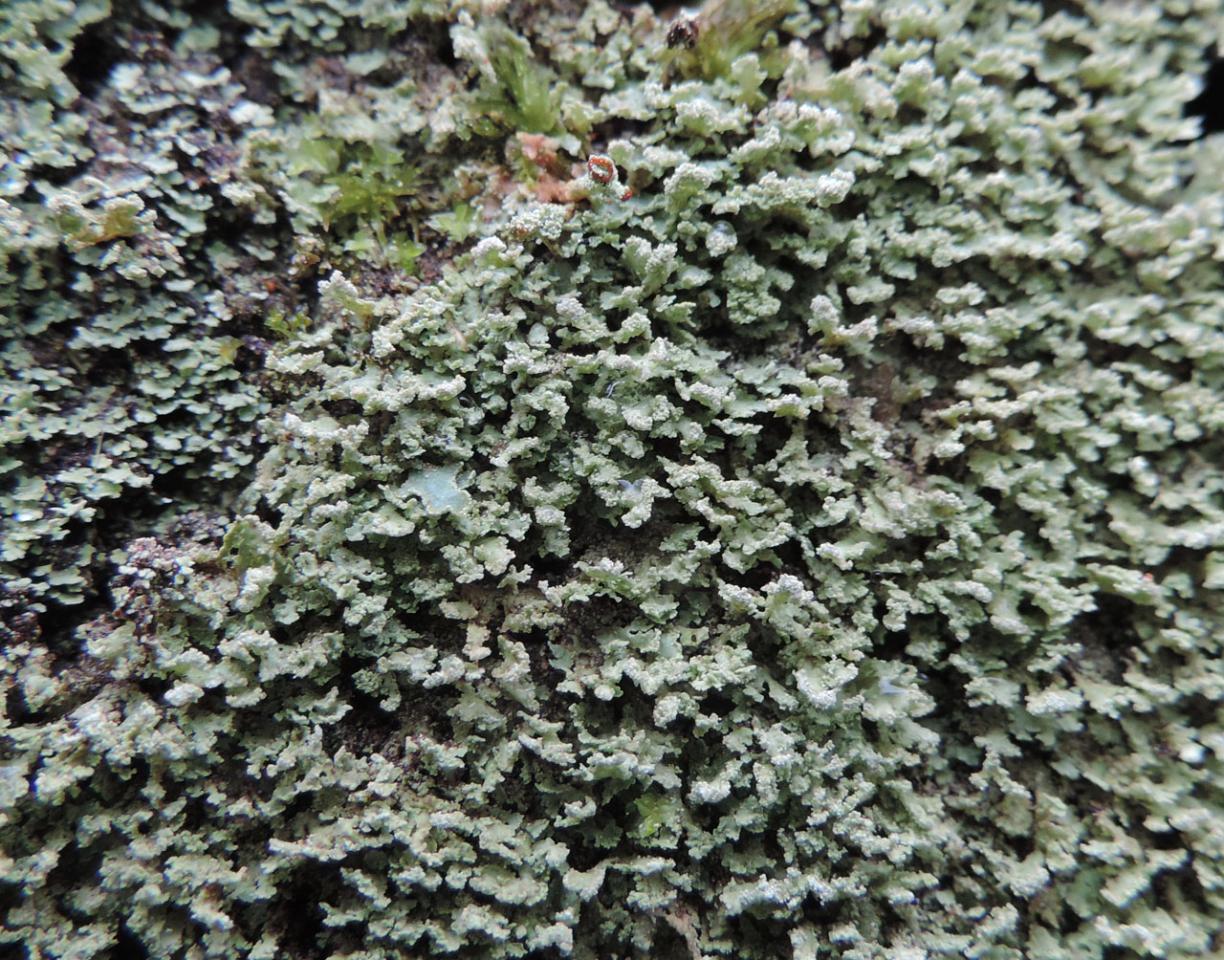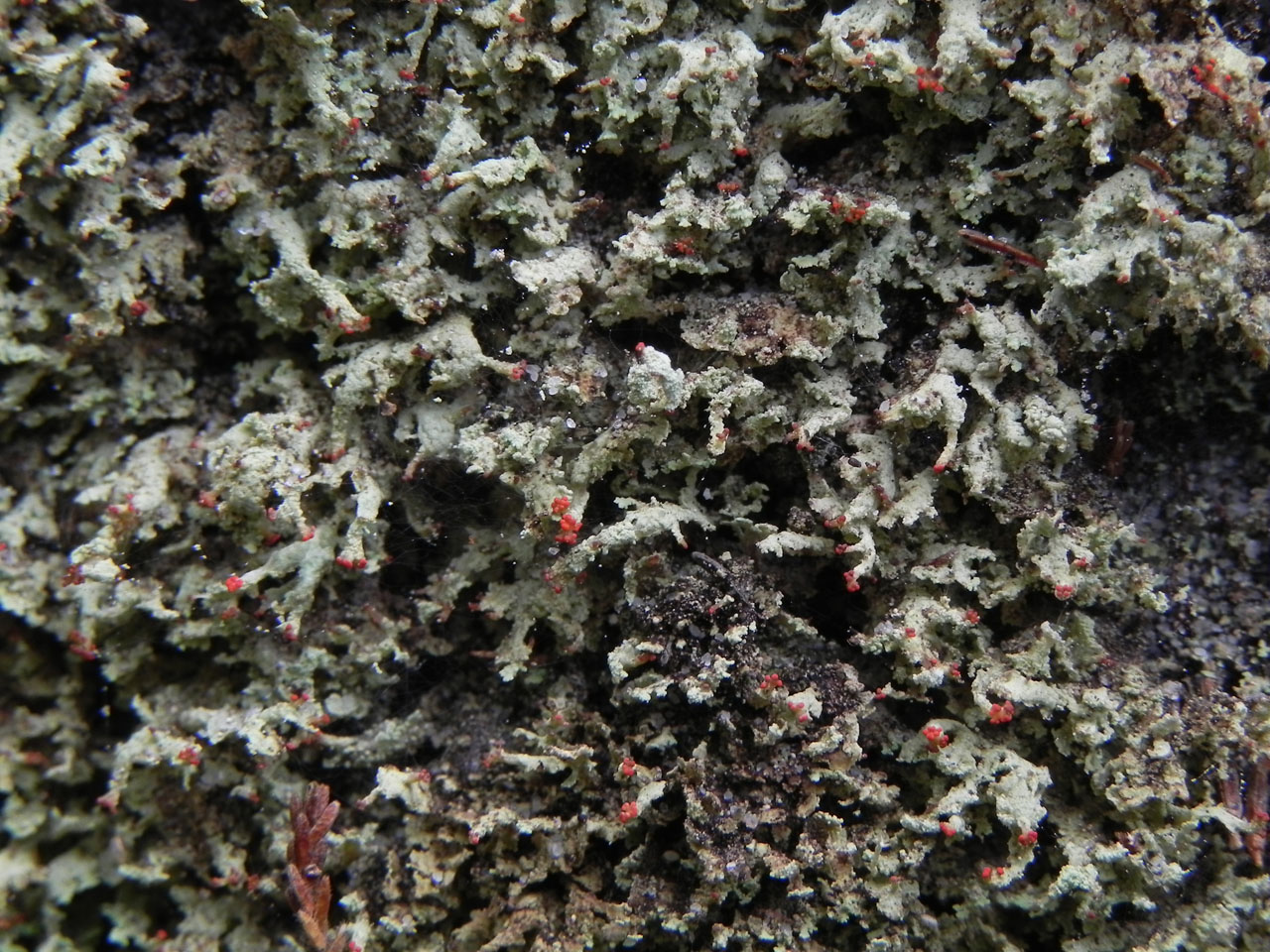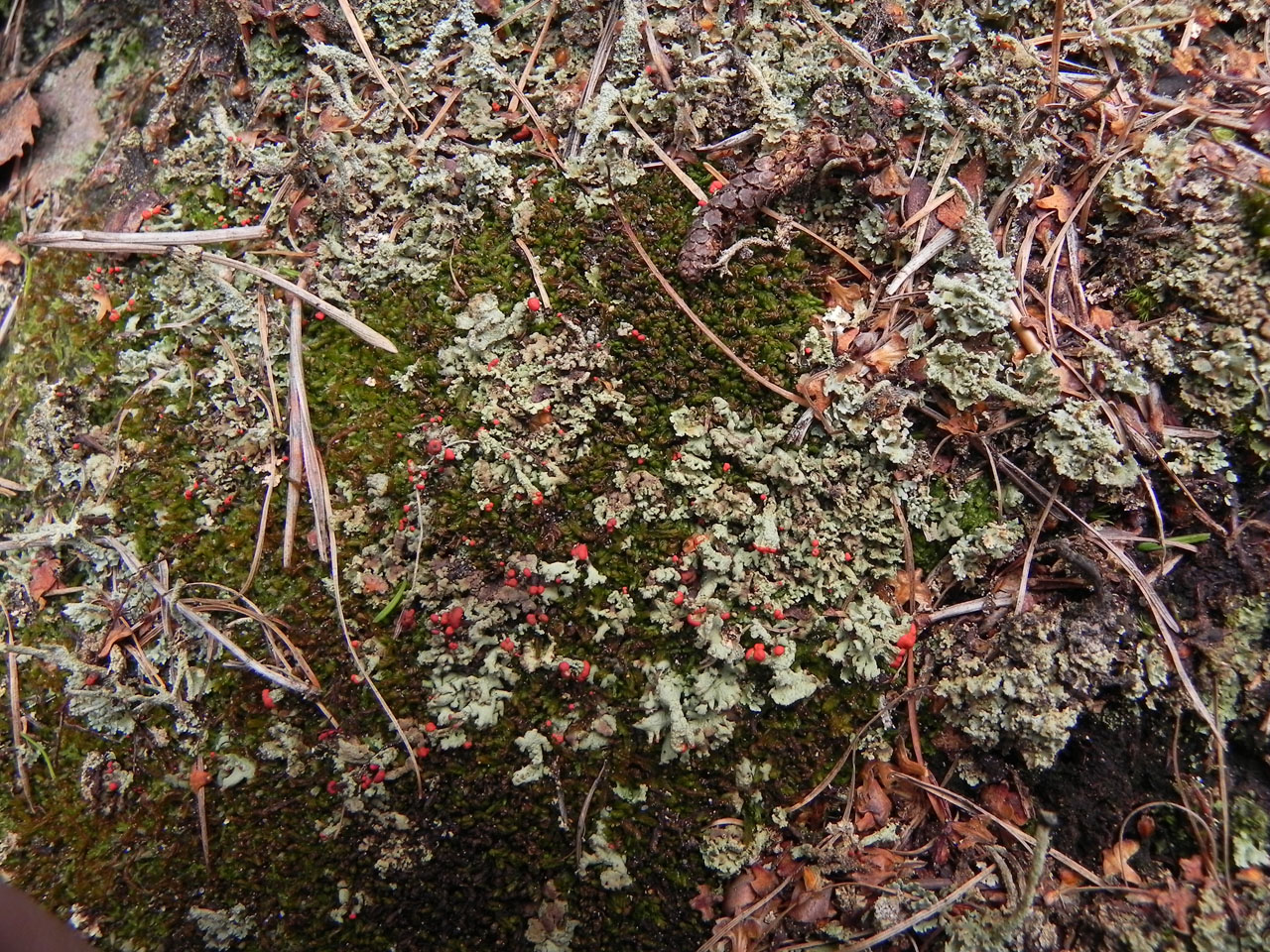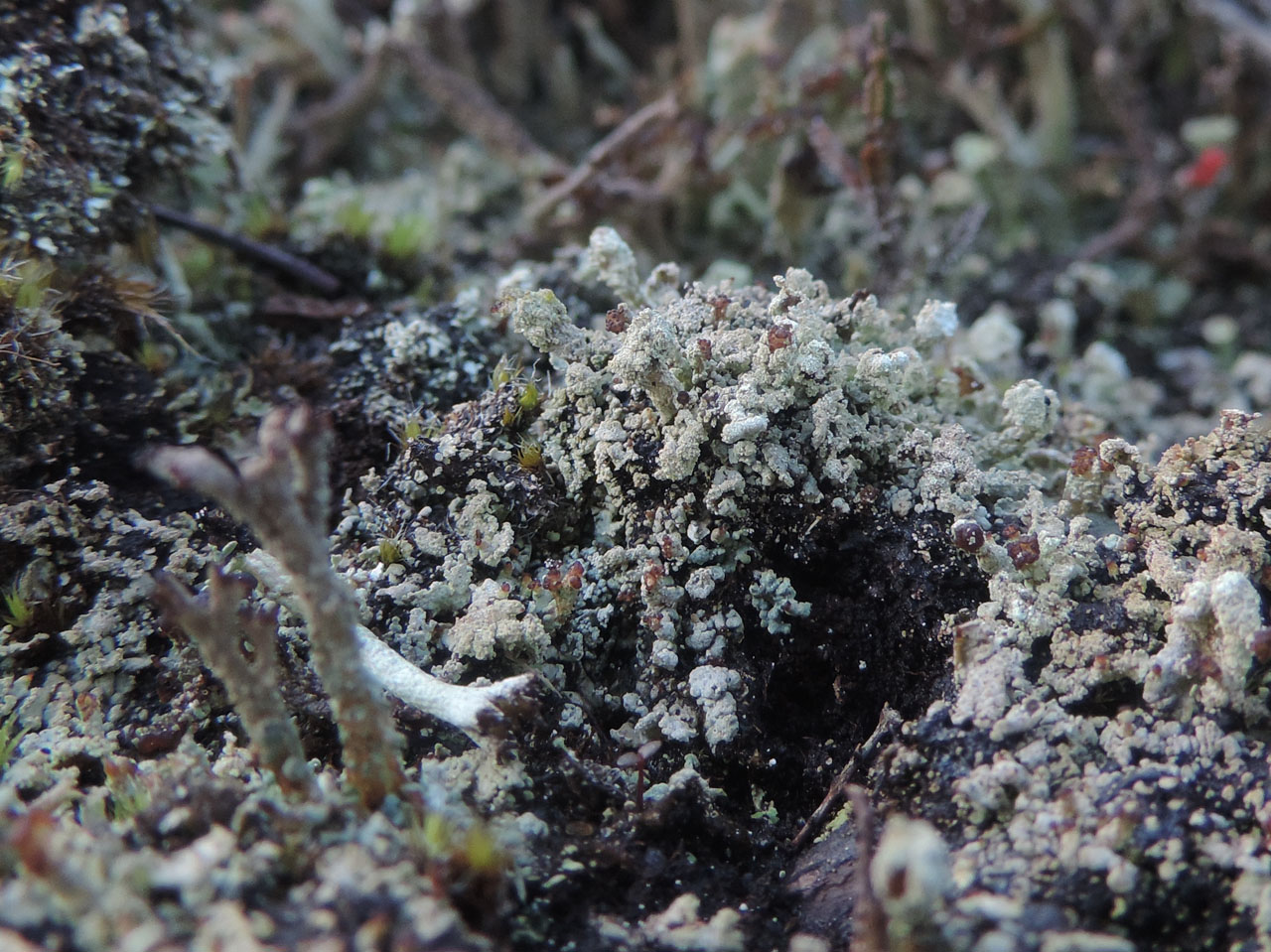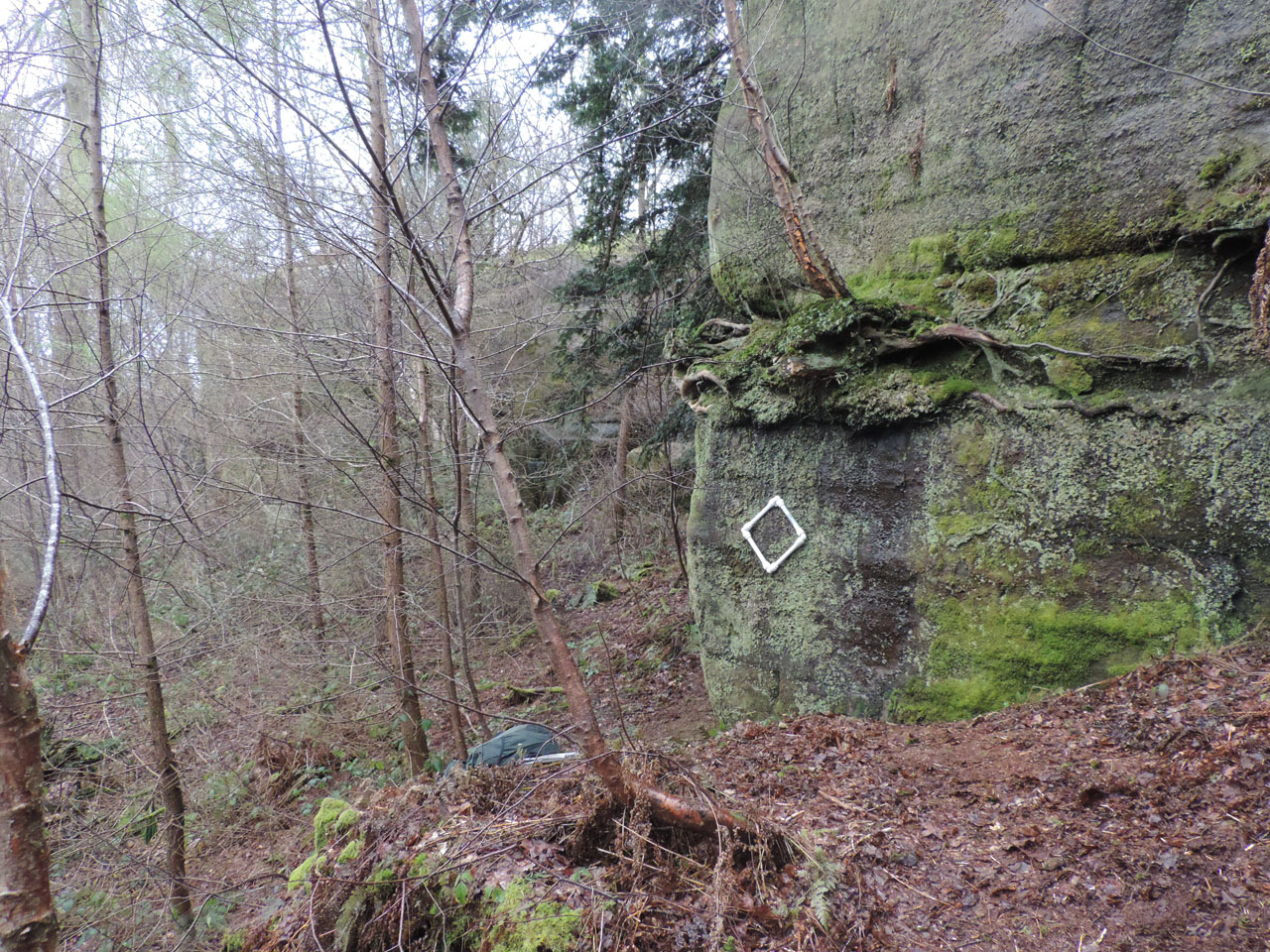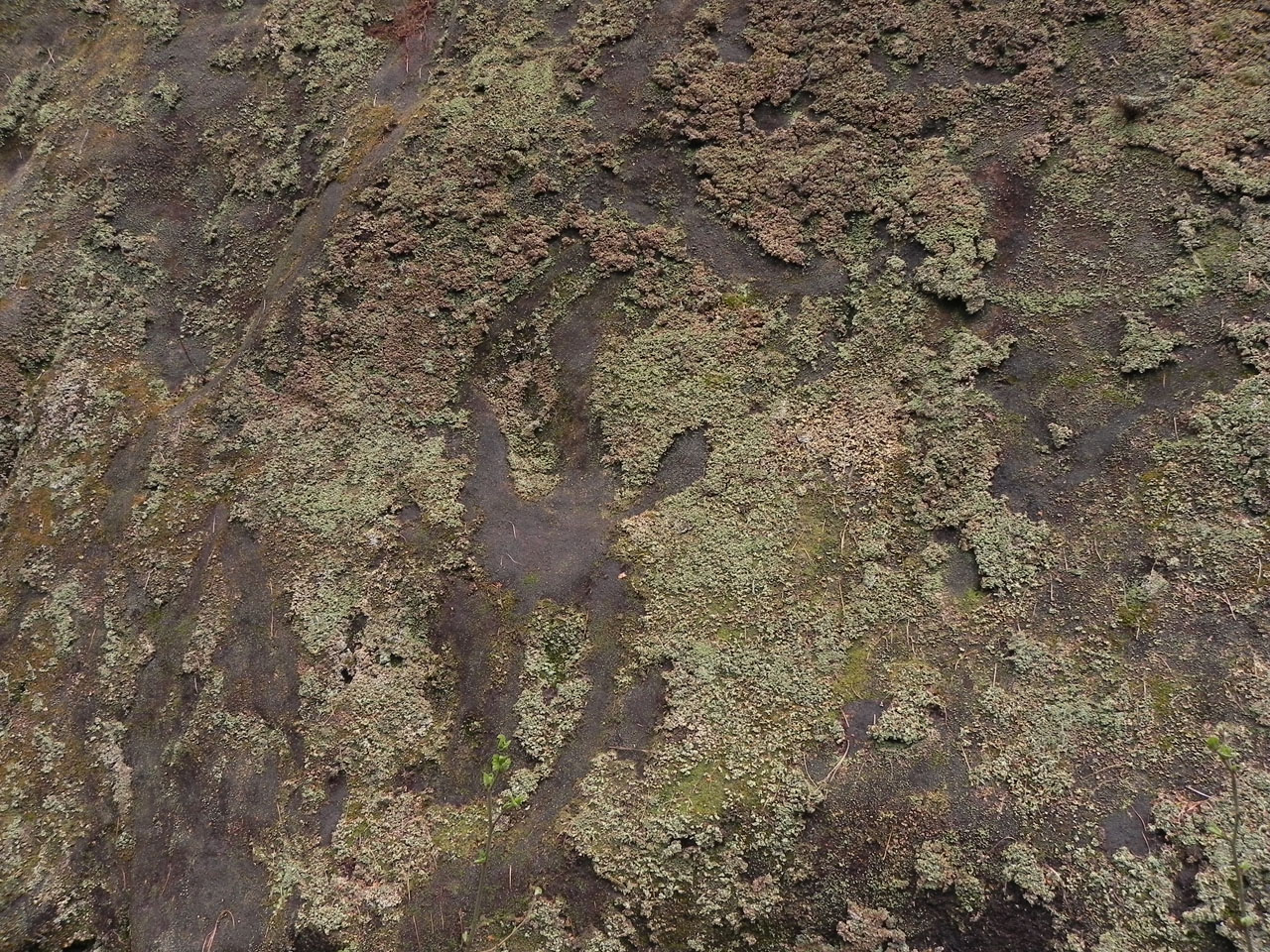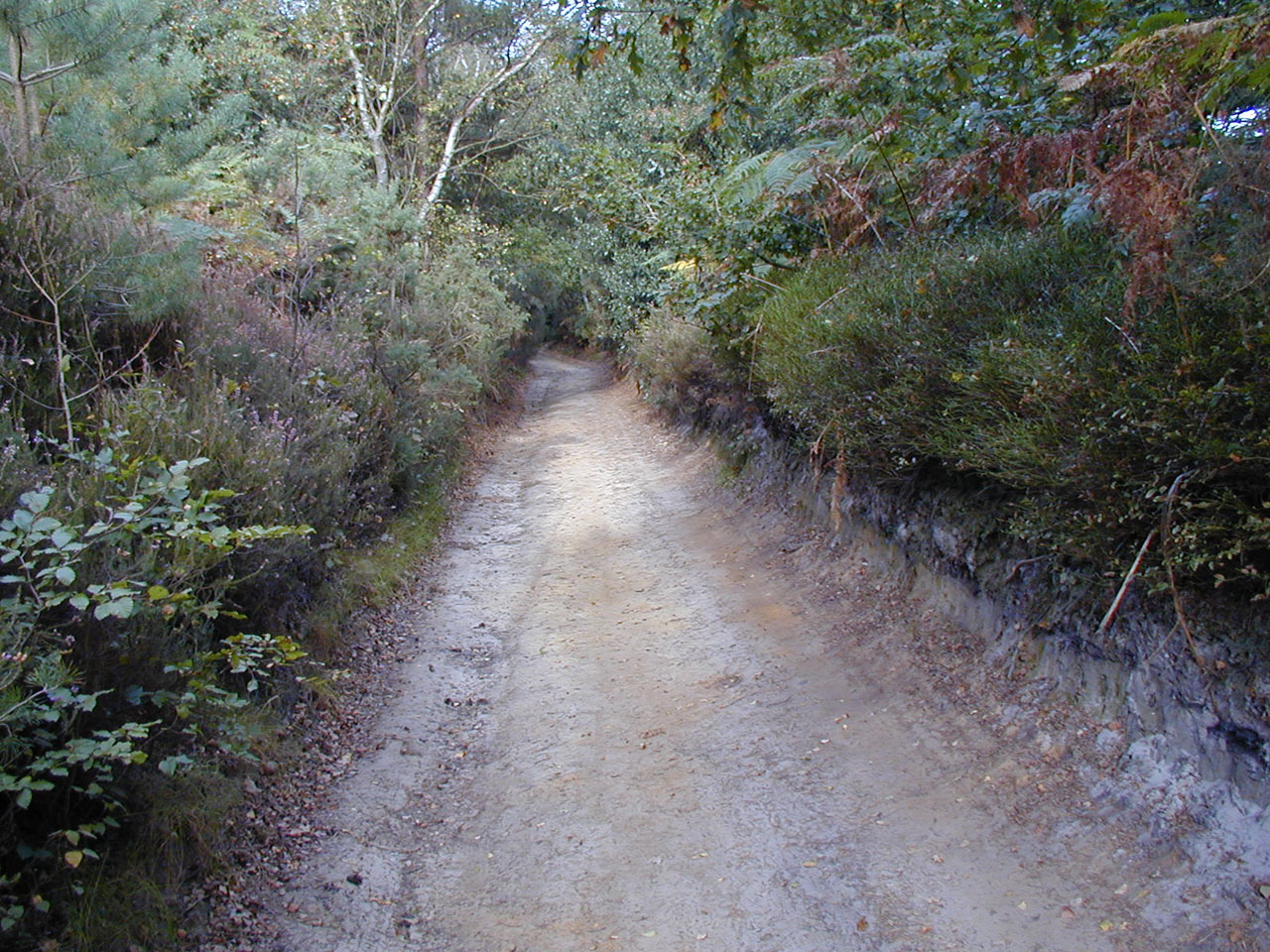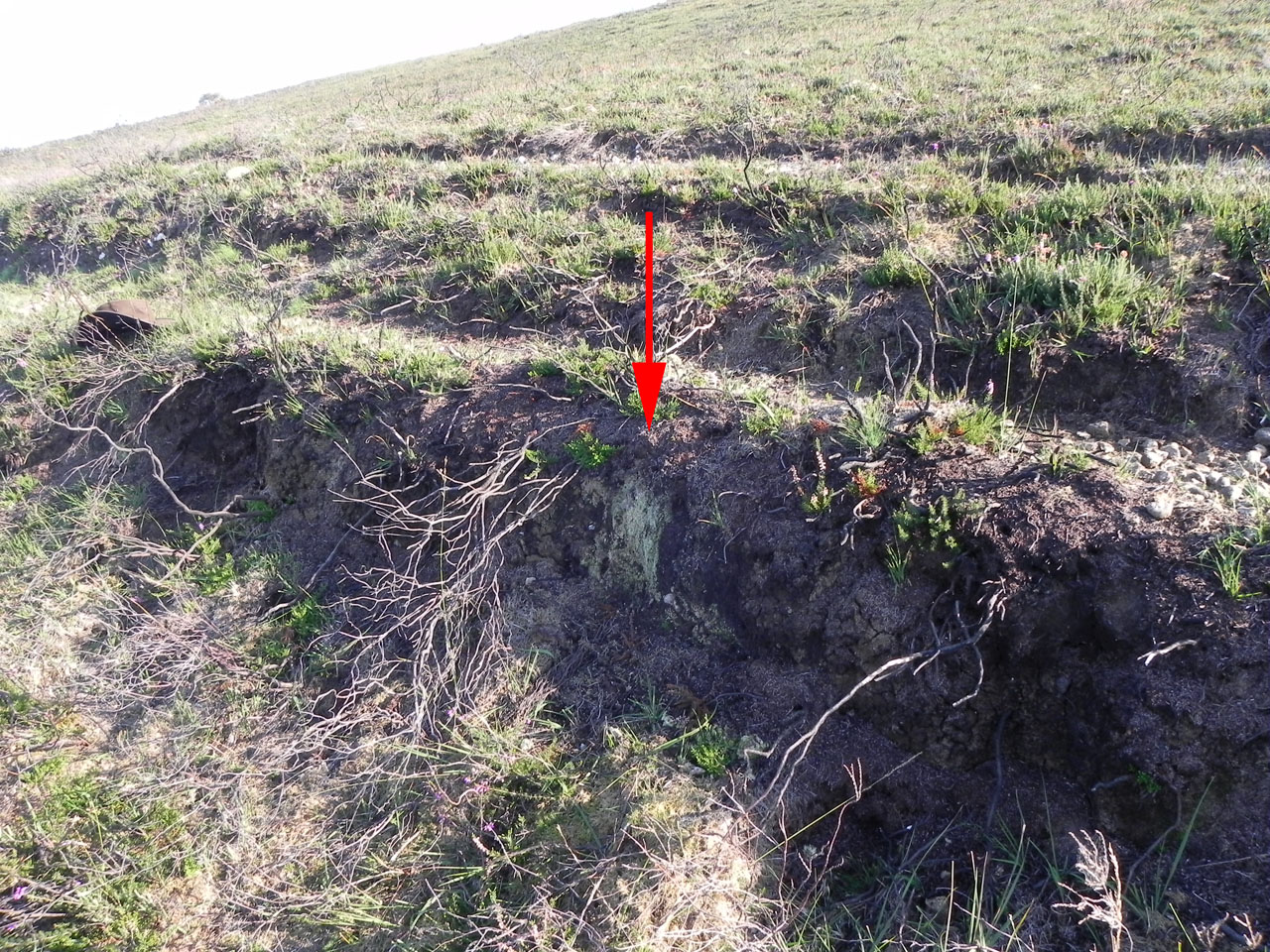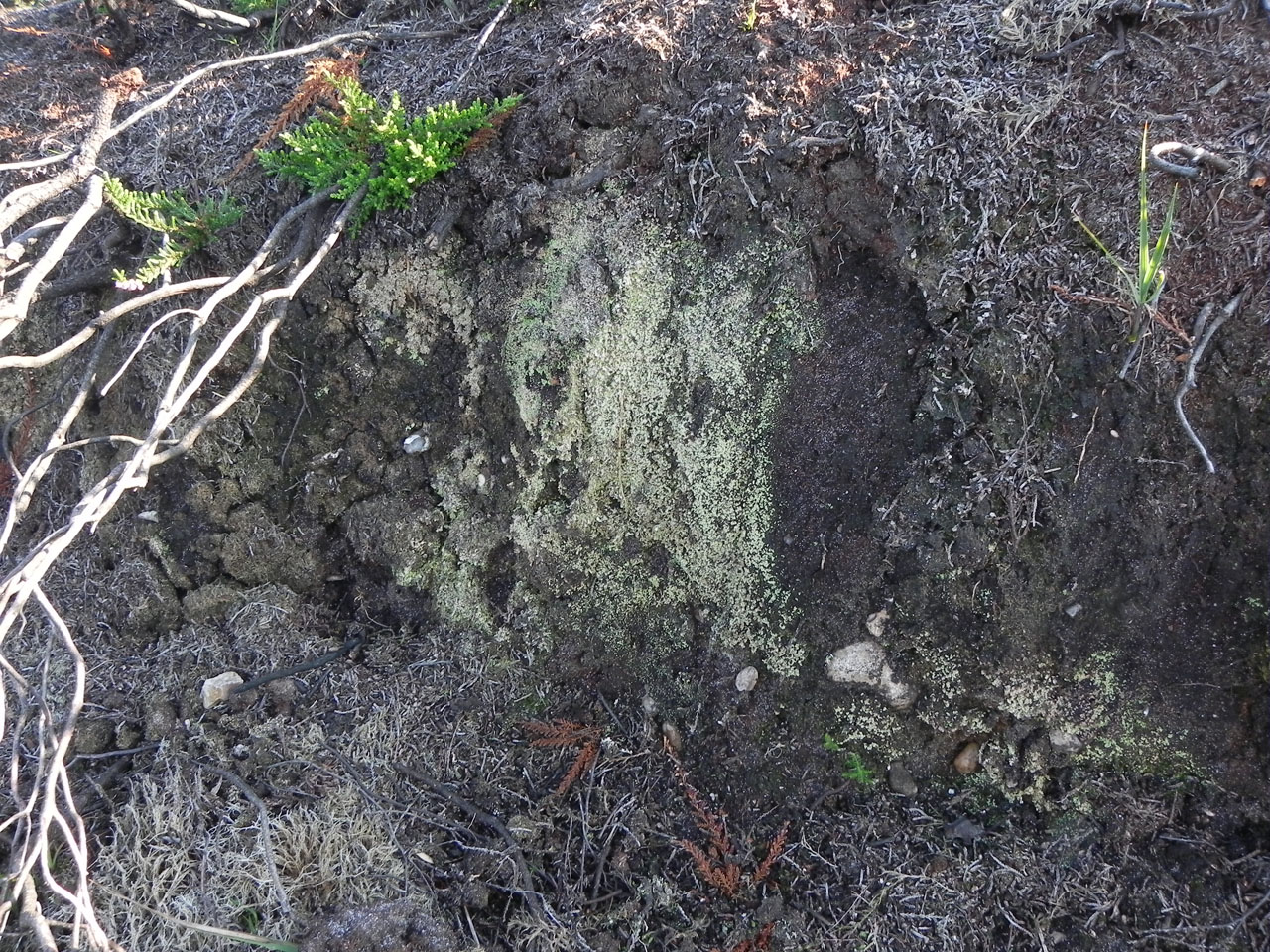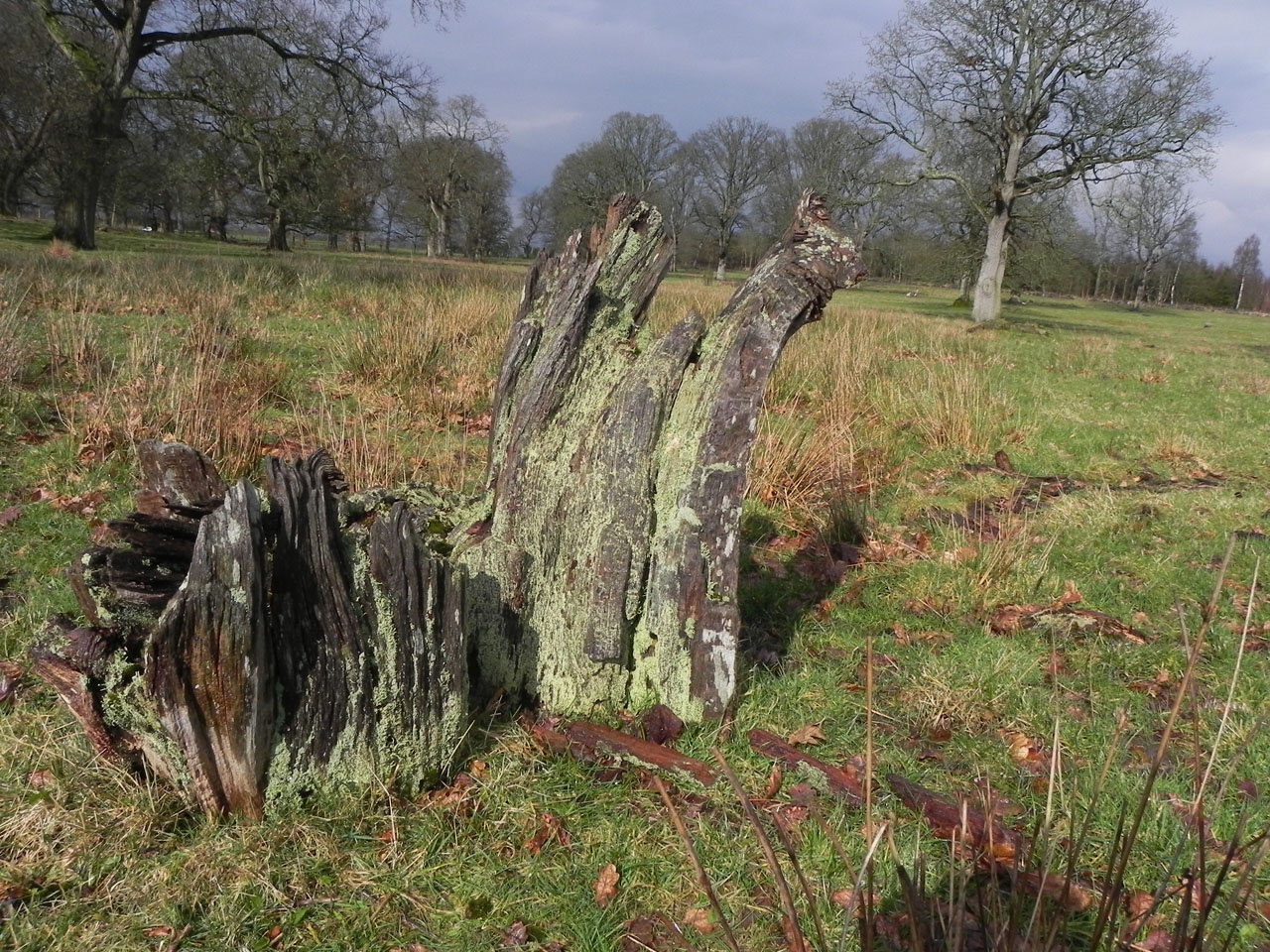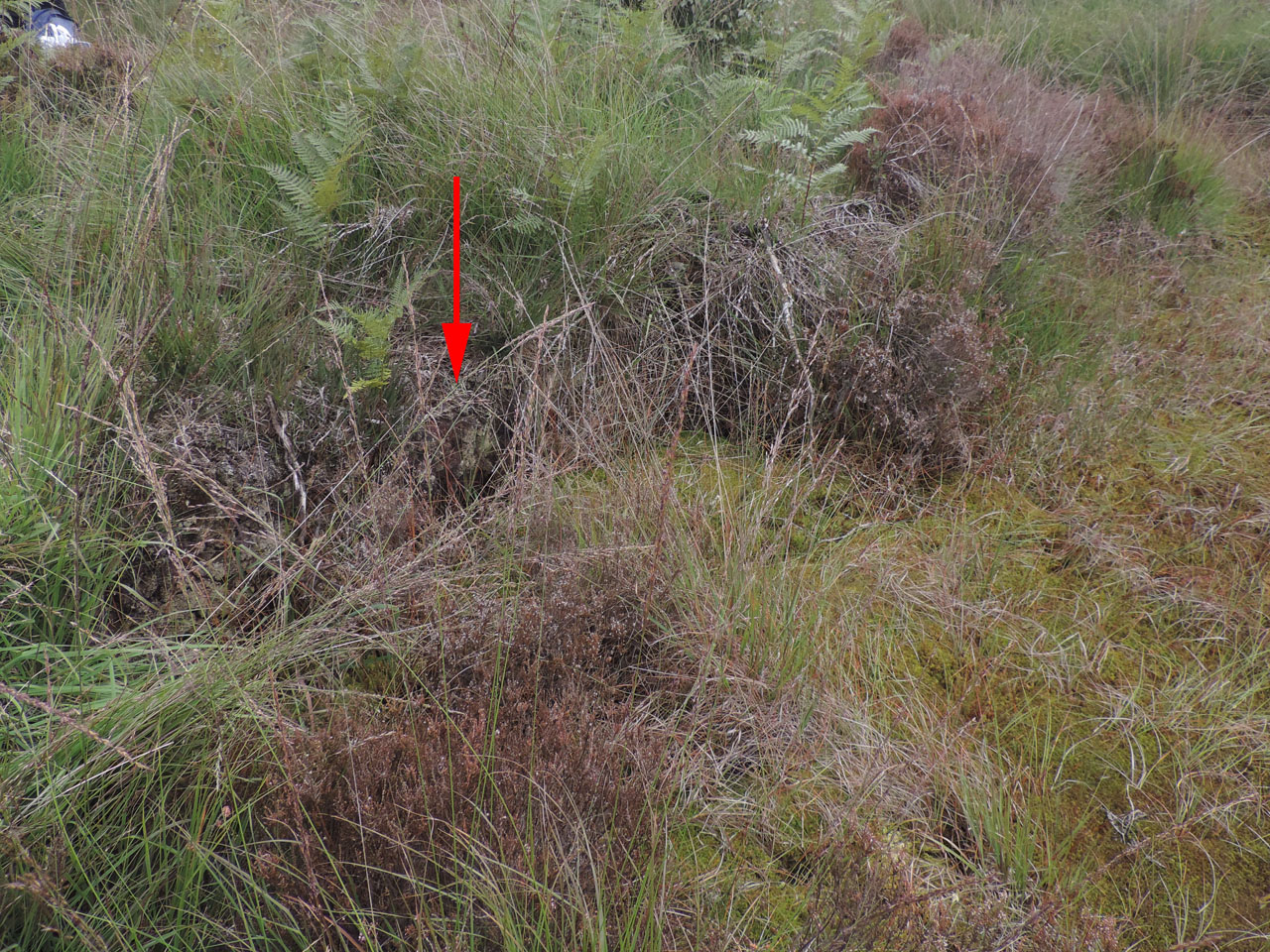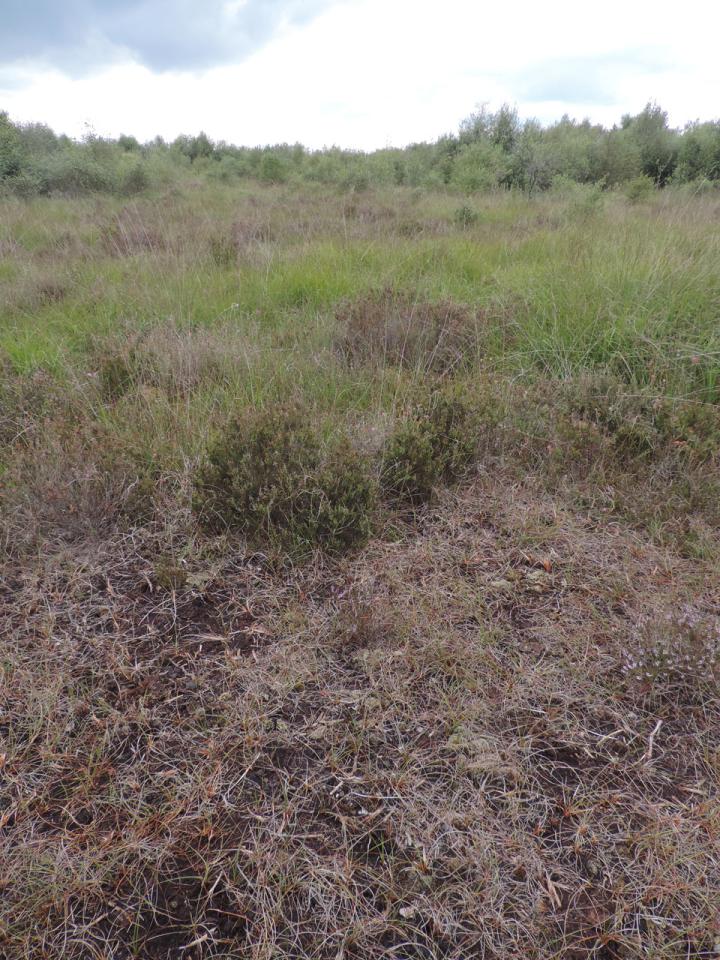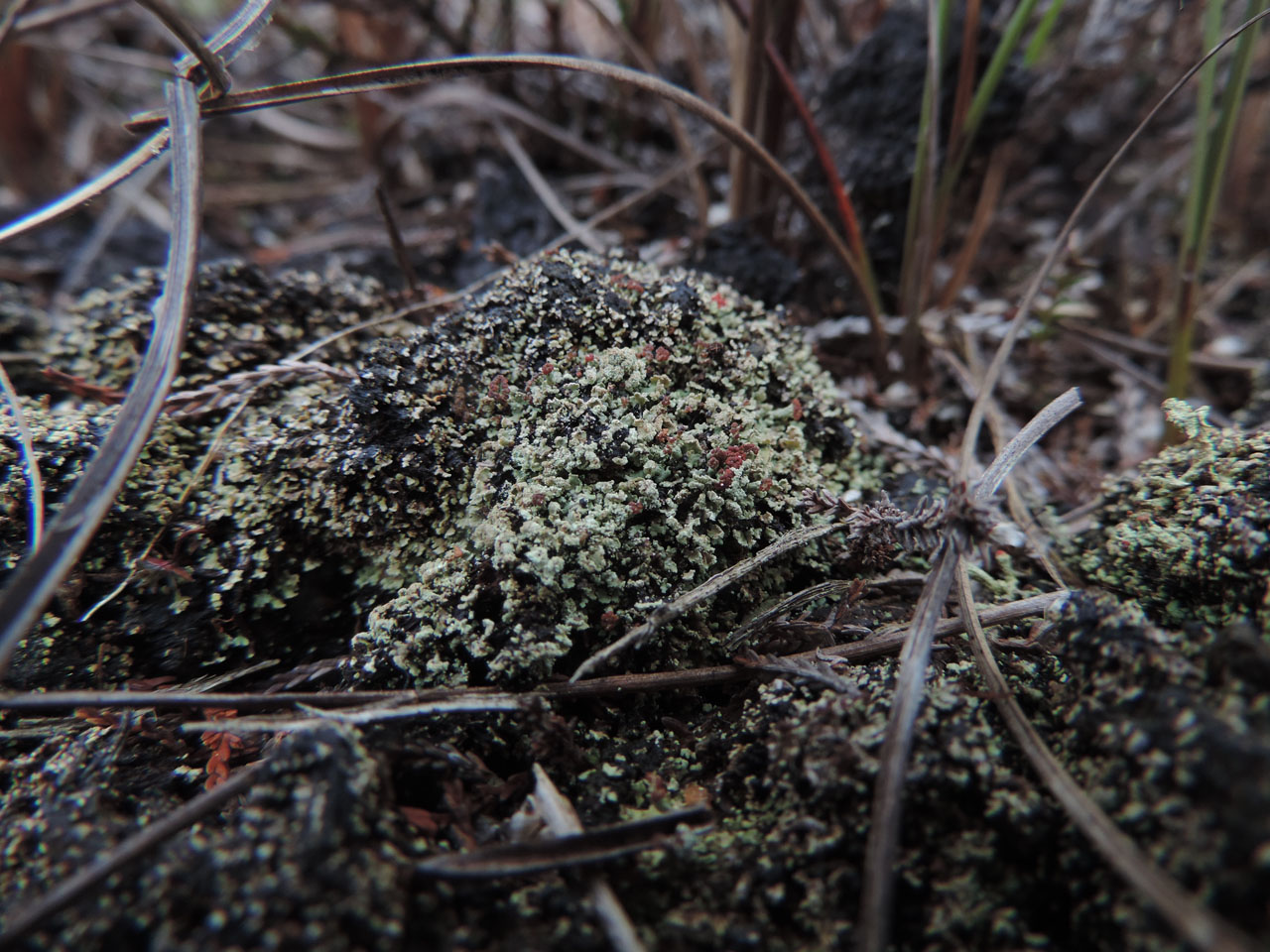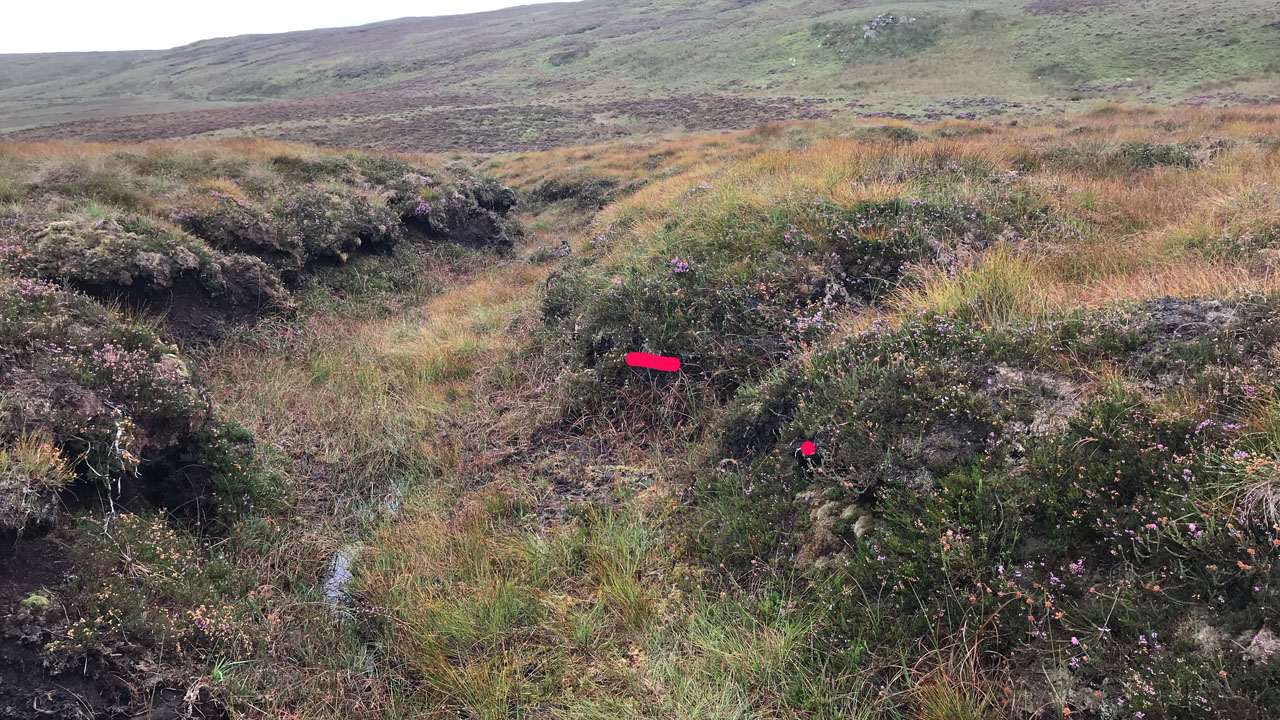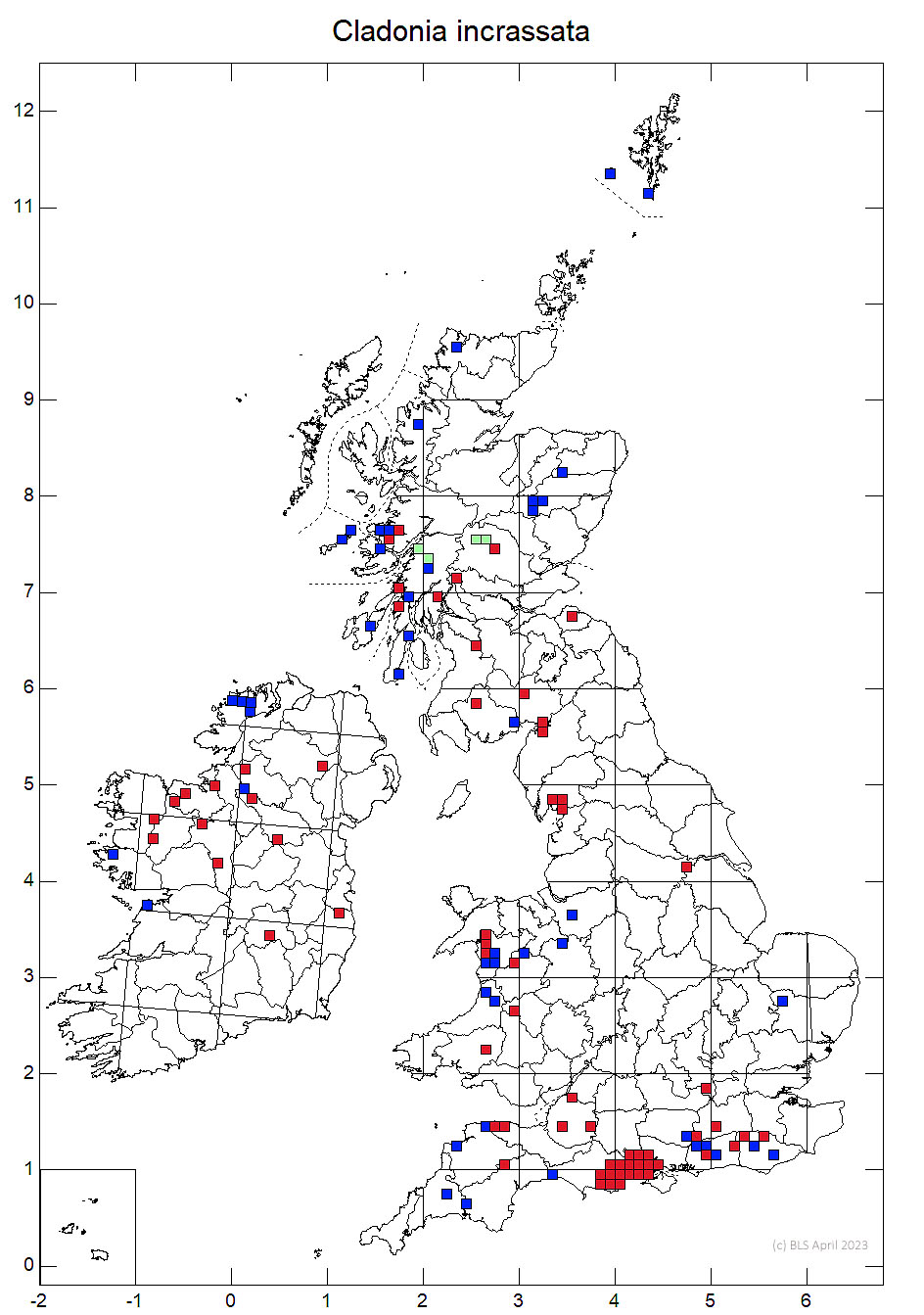Cladonia incrassata
A small mat forming Cladonia with yellowish grey-green incised and crenulate squamules which are usually conspicuously farinose-granular sorediate below. Podetia small, and can be sparse and inconspicuous barely rising above the squamules, often deformed, unbranched or distortedly, with red apothecia at the tips. The UV+ bluish white florescence is a distinctive feature. The distribution is very patchy, rarely recorded over wider areas, but very locally frequent in a few areas. Found in a variety of damp acid habitats on humus, peat, soft sandstone and lignum. Possibly very under in neglected habitats such as peat cuttings, of which it is very characteristic.
Podetia mostly 2–5 mm tall, infrequent, often deformed, unbranched or ± distortedly branched, or produced as an extension of a squamule, ± flattened with a partly corticate-granular and sorediate surface. Basal squamules to 4 mm diam., dominant, ± numerous, yellowish grey-green, often contorted, crenulate-incised, usually conspicuously farinose-granular sorediate below, occasionally also above, ± erect, ± tinged orange at the point of attachment (K+ purple). Apothecia red, frequent, usually sessile on the upper surface and extended margins of the squamules, more rarely on short, sometimes flattened ± corticate irregular podetia. Thallus C–, K–, KC+ yellow, Pd–, UV+ white, bluish, or rarely UV– (rarely K+ yellow, KC–, Pd+ yellow). There are three chemotypes: (a) usnic, squamatic and didymic acids; (b) usnic, squamatic and barbatic acids; (c) squamatic, didymic and thamnolic acids (from Pino-Bodas et al (2021))
The small nearly sessile red apothecia, yellowish thallus and chemistry are diagnostic. On dead wood mostly easily confused with Cladonia parasitica, which has similar mats of incised squmules, but these are pale grey rather yellowish grey-green. When wet, however, the colour difference between the squamules of the two species is less marked. Scanning with a UV torch makes it easier to spot this species.
Very locally frequent on damp soft sandstone and on acid, peaty soil in heathland, the sides peat hags or on old cut surfaces of peat, more rarely on damp lignum; local but easily overlooked. Occurs in a distinct series of habitats. It is most prominent on the soft damp sandstone of the Wealden sand rocks, where it can dominated many square meters of rock.
It is widespread but occasional in southern heathland landscapes in Hampshire and Dorset, where in typically occurs on eroded banks, including the sides of hollow ways, path ruts, rabbit holes and natural slumping banks above springline mires. It also lives on after conversion of heath to plantations along the banks of forest roads. In the New Forest it has proved to be very fire tolerant, surviving controlled burns as intact thalli, rather than germinating from propagules like most heathland lichens.
It is curiously rare on damp lignum, typically being found in a very few logs or stumps at any one site and absent from many suitable looking woods.
In contrast it appears to be a regular component of the lichen assemblage on banks of exposed acid peat, but this is a rather neglected habitat and it is probably very under recorded in this habitat. It occurs widely on both old peat cuttings and eroded peat hags in lower lying bogs. It is typical of both raised bogs (NVC: M18 Erica – Sphagnum raised mire) and western blanket bog (NVC: M17, Trichoporum – Eriophorum blanket mire) but is absent from higher altitude mountain blanket bogs (NVC: M19 Calluna – Eriophorum blanket mire).

From S. England & Wales to W. & N. Scotland and Shetland, with scattered records throughout Ireland, where it is probably frequent on old peat cuttings.
A rather rare lichen in many parts of Britain and Ireland. Often threatened by over shaded by vegetation succession and, in some habitats, is dependant on regular disturbance. In habitats such as peatlands, such disturbance is now discouraged for very good conservation reasons, but this cessation of disturbance may locally threaten this and other peatland lichens as a side effect.
Britain: Notable
Wales: Near Threatened
Pino-Bodas, R., Sanderson, N., Cannon, P., Aptroot, A., Coppins, B., Orange, A. & Simkin, J. (2021). Lecanorales: Cladoniaceae, including the genera Cladonia, Pilophorus and Pycnothelia. Revisions of British and Irish Lichens 19: 1-45. Link
Sanderson, N. A. (2016) The New Forest Heathland Lichen Survey 2011 – 2015. A report by Botanical Survey & Assessment to Natural England, Forest Enterprise & The National Trust. Link
Text by Neil A Sanderson, based on Pino-Bodas et al (2021)
